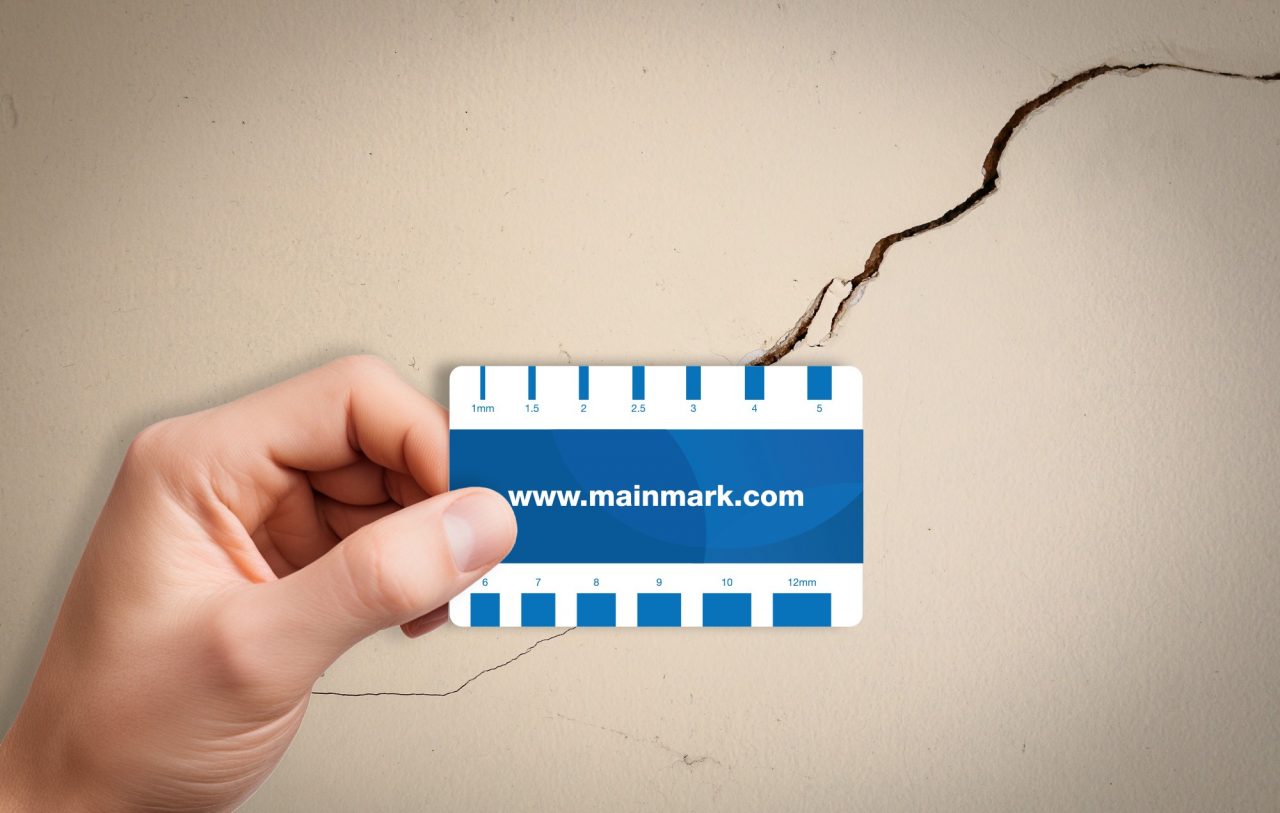
Cracked Wall Repairs
Effective Solutions For Cracked Walls & Cracked Wall Repairs
Structural cracks in your walls are clear indicators of potential subsidence issues. Ignoring these warning signs can result in costly damage to your property.
Mainmark offers an innovative solution that effectively and efficiently addresses these concerns, ensuring your property remains secure.
- 50 Years Product Warranty: Our solutions are backed by a 50-year product warranty, giving you peace of mind and long-term security.
- 35 Years of Experience in Australia: With over three decades of experience, Mainmark has become a trusted name in the industry, offering unparalleled expertise.
- Non-invasive and Surgical Method: Our approach is non-invasive and precise, avoiding the mess and disruption of traditional methods.
- Modern Underpinning Alternative: We provide a contemporary alternative to underpinning, using state-of-the-art technology to stabilize your property.
- Trusted by Over 30,000 Asset Owners: Join the thousands of satisfied customers who have entrusted Mainmark with their property needs.
- Cost-effective: Our methods are advanced and cost-effective, providing superior value compared to traditional solutions.

Video
Cracked Wall Repair in Action
Our Teretek® Resin Injection technology can raise, re-level and re-support subsiding properties.
This remarkable solution is the key to raising, re-leveling, and re-supporting properties affected by subsidence. Our skilled team of engineers and technicians will guide you through the process, demonstrating how we restore structural integrity and eliminate those troublesome wall cracks.
Trust Mainmark for excellence in cracked wall repair.
Mainmark Google Reviews
Cracked Wall Repairs
Before & After Treatment
Trusted by over 30,000 Homeowners
See the incredible difference in homes affected by subsidence issues in our “Before & After” showcase. Cracks in walls, both internal and external, often indicate the need for foundation re-levelling. Mainmark’s innovative and non-invasive solutions can quickly raise, re-level, and re-support your home, all with minimal disruption.
Features & Benefits
Mainmark’s Solutions & Technologies

Fast
Our technologies have fast curing times and treated areas can be used immediately or without the delays compared to traditional repair methods.

Environmentally Inert
Our technologies use an inert material that is non-toxic and does not leach into the environment or affect the treated area.

Non-Invasive
Our solutions are of surgical nature compared to traditional methods.

Cost-Effective
Compared to traditional methods, our solutions are more cost-effective, with minimal disruption to the area.
Repair cracks in bricks caused by movement
Understanding Cracked Walls: Subsidence Causes and Factors
The issue of subsidence, especially in the context of cracked walls, stems from a multitude of causes and contributing factors. All of these share a common thread—a shift in the ground, resulting in soil movement.
Moreover, the impact varies depending on the type of ground involved. When the ground undergoes changes, building subsidence becomes a prevalent concern.
In such cases, foundations or footings lose their full support and begin to sink due to the weakened ground.
Soil Types
Moisture levels in the soil affect reactive clays as they expand and contract.
Oversaturated clays lose their strength resulting in footing subsidence. In loosely packed soils, such as sand and silt, the fine particales in the soil can wash away causing the footing to settle.
Tree Roots
Neighbouring trees and shrubs absorb water using their roots causing movement in the soil as it soaks up moisture in the ground.
Footing Systems
Poor foundation design or inadequate compaction of soil during construction results in movement of the structure as it settles.
Excess Water
Burst or cracked water pipes including blocked sewage and rain gutters can oversaturate clay soils or wash fine particles from sand and silt soils and cause footings to subside.
Extreme or Seasonal Weather
Natural disasters such as flooding, drought and earthquakes affect soil moisture levels in particular clay resulting in excessive foundation movement.
Renovation or Construction
Vibration caused by nearby construction activity such as drilling or piling, or heavy road traffic causes soil particles to shift and settle, resulting in ground subsidence.

Start measuring wall cracks from the convenience of your home.
If you notice wall cracks around your home that are:
Large cracks that start at windows, doorways or corners of buildings
Cracks wider than 5mm
Jagged, horizontal or vertical, zig-zagged, stepped in brickwork or follow mortar line
These characteristics may indicate weakness in your property’s foundation.
To help you discover if the cracks in walls around you home could be due to subsidence, we’ve developed this handy tool. Download our FREE crack gauge and start measuring and monitoring the wall cracks around your home now!
Projects
Featured Residential Projects
Get a quote
Arrange a site assessment in 3 simple steps:
Step 1
Submit your enquiry using our online form. Include a brief message about the type of foundation issues you are experiencing.
Step 2
Our friendly customer service team will be in touch to schedule a site assessment that suits you.
Step 3
One of the Mainmark experts will visit your home or property, assess the damage, and ascertain the likely cause. They will establish the approach needed, creating a plan specific to the needs of your building and provide you with a detailed quote.
FAQ
Frequently Asked Questions
We’ve compiled answers to some of the most common questions our customers have. We strive to provide you with clear and informative responses to help address your concerns.
However, we understand that your situation may be unique, and you might have specific questions not covered here.
Before you carry out wall crack repairs and move on, consider whether there may be a deeper underlying issue. If you’re worried about cracks in your walls, call Mainmark to assess these before the issue worsens.
How do you know if a wall crack is serious?
To determine the seriousness of a wall crack, look for the following signs that may indicate a significant problem with the structural integrity of your home, potentially necessitating extensive foundation repair work, including underpinning and rebuilding:
- Width: Any crack wider than 25mm is a strong indicator of a serious issue.
- Shape: Cracks that are wider at the top than the bottom, or those visible from the external walls, can suggest subsidence.
These are crucial indicators that should prompt you to seek professional advice and assessment from Mainmark Solutions for a comprehensive evaluation and potential solutions.
What are the different types of cracks?
Step Cracks are often found on masonry walls. They appear like steps in the brickwork/blocks and typically follow mortar lines. The mortar and masonry deteriorate due to the movement of the affected wall.
Horizontal Cracks are found running horizontally between bricks and in some instances, they transition to become a step crack. Internally they typically appear as gaps between skirting board and floor or between the cornice and ceiling.
Vertical Cracks are usually visible in building extensions where two walls join and in modern buildings at the sides of large window and door openings. The gap is often wide at the top of the joint, exposing the lining.
Expansion Joint Cracks are when footings subside, gaps can open at door and windows.
Should I be concerned about wall cracks?
- Cracks measuring less than 5 millimeters in width are typically confined to the plaster and can be easily repaired and concealed.
- Cracks spanning between 5mm and 15mm in width may indicate more significant structural issues and may necessitate professional repairs.
- Any crack exceeding 25mm in width should be thoroughly inspected by a professional.
Mainmark Solutions offers complimentary inspections. If you have concerns about cracks in your walls, please fill out the form, and we will take care of the rest. Your peace of mind is our priority.
How do you know if internal cracks are structural?
Recognising signs of structural cracks in your foundation:
- Stair-step cracks.
- Cracks on foundation slabs or beams.
- Vertical cracks that exhibit varying widths, typically wider at the bottom or top.
- Cracks measuring 1/8″ in width.
If you’re uncertain about the nature of your internal cracks, Mainmark Solutions is here to assist you. Contact us for expert guidance and a free assessment. Please fill out the form.
What is an example of a structural crack?
Structural cracks often come with clear indicators that set them apart from cosmetic cracks. Here are some common signs of structural cracks to look out for:
- Sloping Floors: If you notice that your floors are no longer level and exhibit a noticeable slope, it can be an indication of a structural issue.
- Difficulty in Closing Doors and Windows: When doors and windows become challenging to close or start sticking, this could be due to the movement caused by structural cracks.
- Various Shapes and Sizes: Structural cracks are diverse in appearance, ranging from horizontal, vertical, and diagonal lines to those resembling a staircase pattern within foundation blocks.
If you suspect structural issues in your property, Fill out the form today. We’ll promptly arrange a free inspection to assess the situation. Your peace of mind is our priority.
Is structural crack damage covered by insurance?
Your property insurance typically covers the repair of structural damage caused by subsidence, including cracks. However, it usually doesn’t cover the expenses related to preventing further subsidence and home movement.
Fill out the form for further assessment, and one our experts will be in touch with you.
How much does it cost to repair wall cracks?
The cost of repairing wall cracks can vary depending on the specific circumstances of your foundation. To provide an accurate estimate, we recommend scheduling a free site inspection with one of our experts. They will assess the damage and provide you with a customised quote based on your unique situation.
Fill out the form now, and one of our experts will promptly arrange a free inspection to assess the situation.

© 2025 The Mainmark group of companies. ‘Mainmark®’, ‘Terefil®’, ‘Terefirm®’ and ‘Teretek®’ are trademarks of the Mainmark group of companies.
Mainmark Ground Engineering Pty Ltd
ABN: 51 606 182 503






























